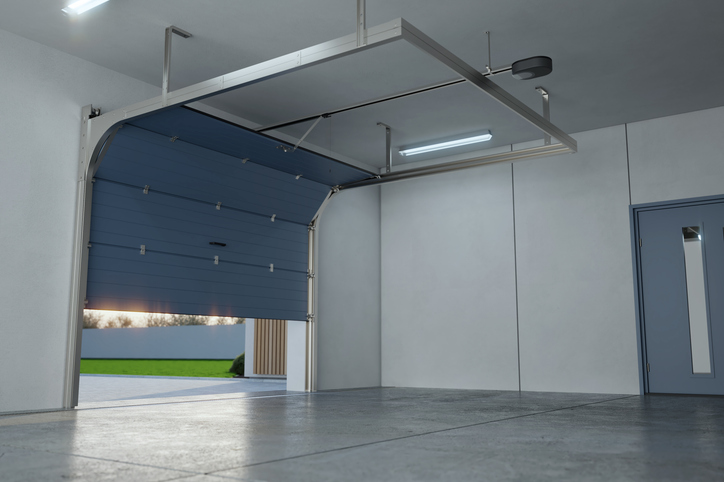Your garage door opener is one of the most frequently used devices in your home, yet it often goes unnoticed until it malfunctions. Over time, wear and tear can lead to issues such as slow operation, excessive noise, or complete failure. However, with regular maintenance, you can extend the lifespan of your garage door opener, preventing costly replacements and ensuring reliable performance. Simple tasks like lubrication, sensor alignment, and balance checks can make a significant difference in the longevity of your system. By taking a proactive approach, homeowners can enhance safety, reduce repair costs, and enjoy uninterrupted functionality for years.
1. Keep Moving Parts Properly Lubricated
One of the easiest yet most effective maintenance steps for a garage door opener is proper lubrication of its moving parts. The chain or belt drive, rollers, hinges, and tracks all require periodic lubrication to minimize friction and prevent excessive wear. Without lubrication, these components can grind against each other, leading to noise, jerky movements, and premature deterioration. Using a high-quality silicone or lithium-based lubricant specifically designed for garage doors ensures smooth operation and protects against rust and corrosion. Regularly applying lubrication at least twice a year can prevent unnecessary strain on the opener’s motor and gears, allowing them to function efficiently for a longer period.
2. Check and Adjust the Door’s Balance
An unbalanced garage door puts excessive strain on the opener, forcing it to work harder than necessary. Over time, this additional stress can lead to motor burnout, broken springs, or premature failure of internal components. To test the door’s balance, manually disconnect the opener and lift the door halfway. If it stays in place, the balance is correct, but if it moves up or down on its own, it indicates an issue with the springs. In such cases, adjusting the tension of the torsion or extension springs is essential, but since handling springs can be dangerous, it is best left to professionals. Ensuring the garage door is properly balanced reduces the workload on the opener and significantly extends its lifespan.
3. Inspect and Tighten Hardware Regularly
Frequent use of your garage door causes vibrations that can loosen nuts, bolts, and screws over time. If left unchecked, loose hardware can lead to misalignment, increased noise, and inefficient operation of the opener. Periodically inspecting the system for any loose or missing hardware is crucial for maintaining a stable and secure setup. The brackets that hold the opener in place, as well as the tracks and roller brackets, should be tightened as needed. Regularly checking and securing these components ensures the garage door operates smoothly and prevents premature wear on the opener’s motor and drive system.
4. Test and Align Safety Sensors
Modern openers come equipped with safety sensors that prevent the door from closing if an obstruction is detected. However, these sensors can become misaligned due to accidental bumps or debris buildup, leading to erratic door behavior or failure to close properly. Checking sensor alignment involves ensuring both units face each other and that the LED lights on them are steady. Cleaning the sensors with a soft cloth and making small adjustments to their positioning can resolve alignment issues. A properly functioning safety sensor system not only enhances safety but also prevents unnecessary strain on the opener by ensuring smooth door movement.
5. Clean and Inspect the Tracks
The tracks guide the garage door’s movement and must remain free of debris, dirt, and obstructions for optimal performance. When dust, grime, or small objects accumulate in the tracks, the door may become misaligned or move unevenly, causing excessive strain on the opener. Cleaning the tracks regularly with a damp cloth and checking for any dents or misalignments can help maintain smooth door operation. If the tracks appear bent or warped, professional adjustment or replacement may be necessary to prevent additional stress on the opener. Keeping the tracks clean and properly aligned allows the opener to function efficiently with minimal effort.
6. Replace Worn-Out or Frayed Cables and Belts
Over time, the cables and belts that assist in the garage door’s movement can fray, weaken, or develop visible signs of wear. A frayed cable or a worn-out belt can snap unexpectedly, leading to sudden door failure and potential damage to the opener. Regularly inspecting these components for any signs of deterioration is essential in preventing unexpected malfunctions. If there are visible cracks, excessive slack, or unusual noises during operation, replacing the cables or belts promptly can prevent serious damage. Since dealing with garage door cables involves high tension, professional replacement is recommended to ensure safety and proper installation.
Extending the life of your garage door opener requires a proactive approach to maintenance, including regular lubrication, hardware inspections, balance checks, and electrical protection. Small issues, when ignored, can lead to significant damage and costly repairs, but with consistent care, your opener can operate smoothly for many years.
Start a maintenance routine today or schedule a professional inspection with us at Door Pros at 760-325-3667 to keep your system running smoothly for years to come.






